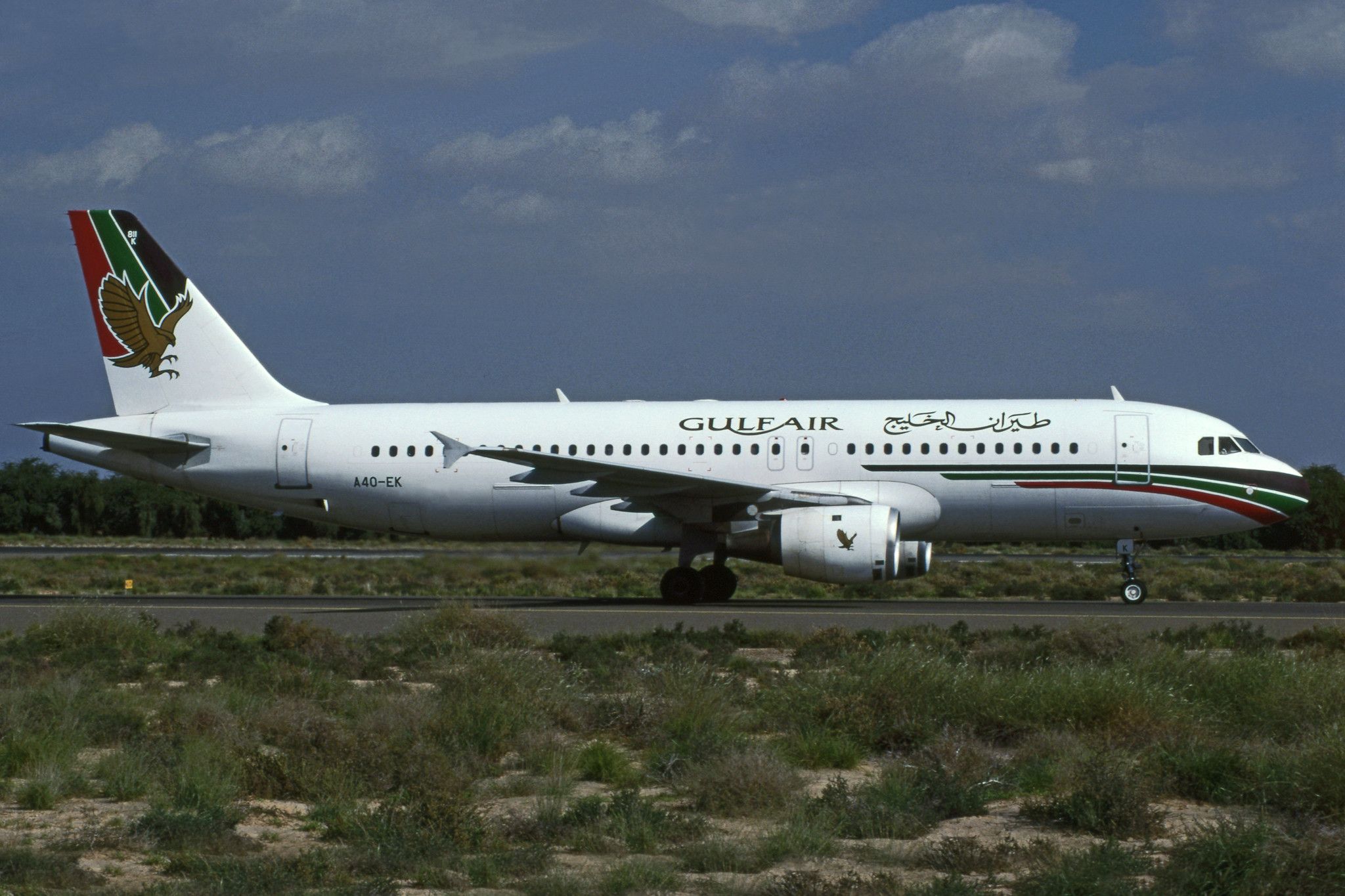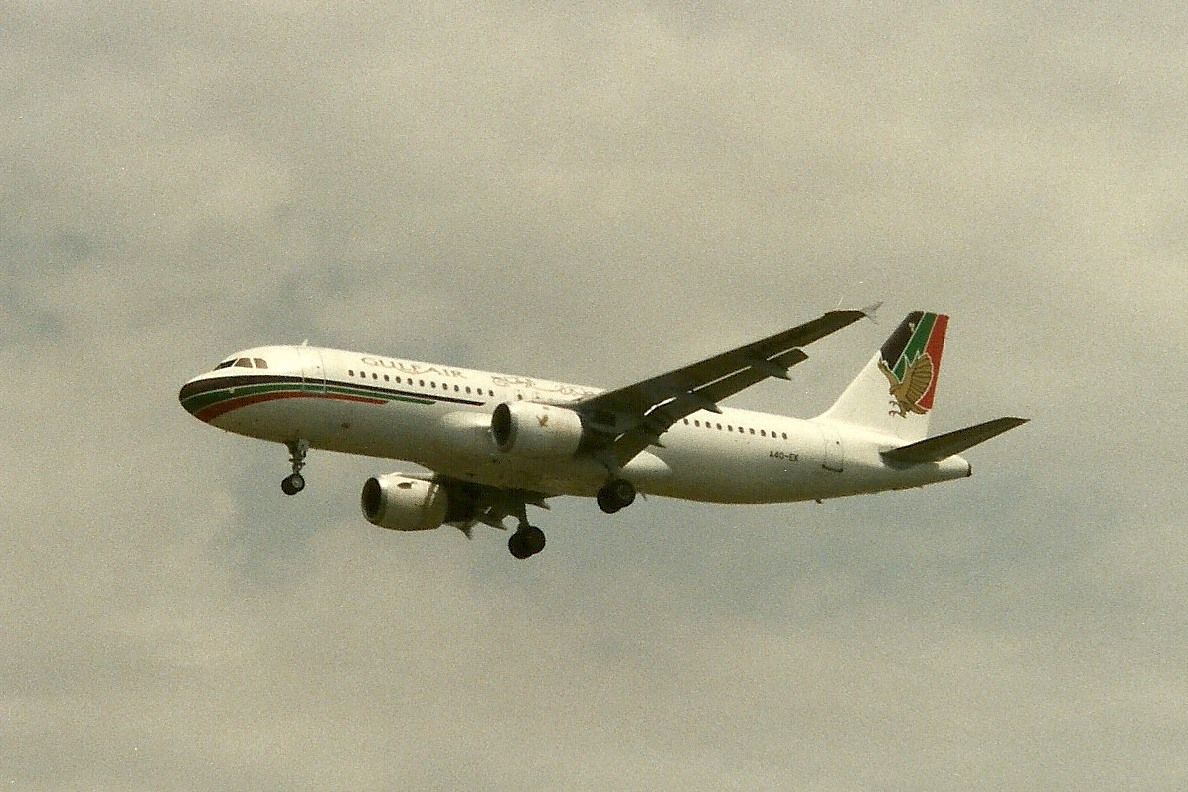On August 23rd, 2000, Gulf Air flight 072 crashed while approaching Bahrain. The accident's death toll resulted in it becoming the deadliest in Bahraini aviation history, a tragic title that it retains today. Let's take a look back to see how exactly the accident unfolded and what factors contributed to it.
The flight and aircraft in question
Gulf Air flight 072 was a scheduled service that originated at Cairo International Airport (CAI), the busiest and largest air hub in Egypt. Its destination was Bahrain International Airport (BAH), which remains Gulf Air's primary hub today. Gulf Air still operates this route today alongside Air Arabia, DHL Aviation, and Egyptair.
According to the Aviation Safety Network, the aircraft operating Gulf Air flight 072 on August 23rd, 2000, was an Airbus A320 registered as A4O-EK. Data from ATDB.aero shows that this particular airframe had been at the Bahraini flag carrier for just under six years, having initially joined the airline brand-new in September 1994.
At the time of the accident, A4O-EK had accumulated a total of 17,370 flight hours across 13,990 cycles, giving it an average cycle length of around 74.5 minutes. The flight had a total of 143 occupants onboard, with this figure consisting of 135 passengers and eight members of crew. Sadly, none would reach Bahrain alive.
Get the latest aviation news straight to your inbox: Sign up for our newsletters today.
Unsuccessful go-around
The flight was a late afternoon/early evening service, and it departed Cairo at 16:52 local time. The majority of the journey across to Bahrain proved uneventful, and it planned to make a standard approach. This would see its crew disconnect the autopilot systems once they had attained visual contact with the runway.
However, approximately one nautical mile (1.85 km) before touchdown, the pilots realized that their approach was too fast and high. As a result, they requested to make a tight 360-degree left turn, known as an orbit, to correct the situation. They did so at a 36-degree bank angle but ultimately opted to go around.
Having been given clearance to do so, with instructions to climb to 2,500 feet to try another approach, the aircraft climbed at a five-degree nose-up angle. However, upon reaching 1,000 feet, the plane suddenly entered a 15-degree nose-down descent. Despite audible warnings from the Ground Proximity Warning System (GPWS), the descent couldn't be rectified, and the A320 crashed into the sea.
Love aviation history? Discover more of our stories here.
Aftermath and investigation
At the moment that the plane came into contact with the sea, it was traveling at a reported speed of 280 knots (520 km/h), with its nose-down angle being 6.5 degrees. Sadly, the crash, which occurred at 19:30 local time, resulted in the deaths of all 143 people onboard, making it, at the time, the A320's deadliest accident.
An investigation into the accident found an array of factors to have contributed to what happened. While it highlighted pilot error and spatial disorientation, Gulf Air flight 072 ultimately crashed as a result of a deadly combination of various individual and systemic aspects. For example, a lack of crew resource management (CRM) training is also said to have played a role.
Part of the conclusion in an MoT Bahrain report read:
"The factors contributing to the above accident were identified as a combination of individual and systemic issues. The individual factors during the approach and final phases of the flight were: non-adherence to standard operating procedures (SOPs) by the captain; the first officer not drawing the attention of the captain to the deviations of the aircraft from the standard flight parameters and profile; the spatial disorientation and information overload experienced by the flight crew; and, the non-effective response by the flight crew to the ground proximity warnings."
Today, Gulf Air remains a major player in the Middle East. It is still a prominent operator of the A320, holding 14 units in its fleet.
What are your thoughts about the crash of Gulf Air flight 072? What do you make of the overall causes and consequences of the accident? Let us know what you think of the event in the comment section.
Sources: ATDB.aero, Aviation Safety Network


